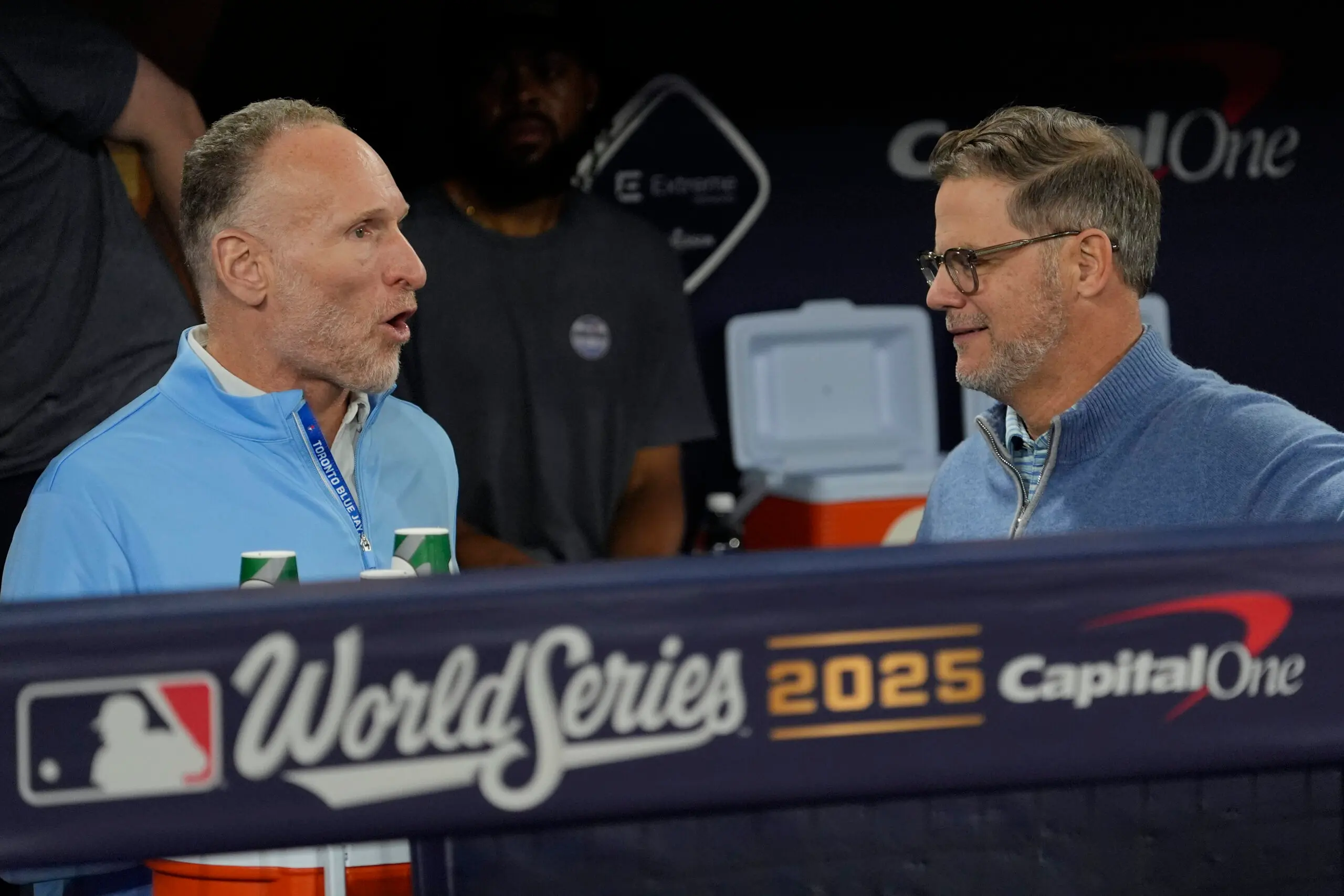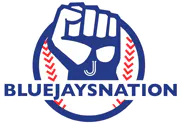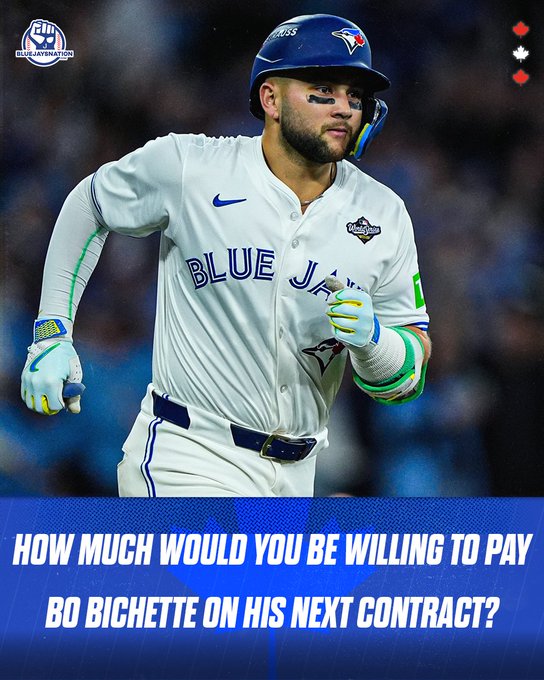How much would you be willing to pay Bo Bichette on his next contract?
What’s next for Blue Jays following World Series Game 7 heartbreak?

Photo credit: John E. Sokolowski-Imagn Images
By Thomas Hall
Nov 4, 2025, 16:00 ESTUpdated: Nov 4, 2025, 16:18 EST
Cruel or not, the Toronto Blue Jays already have to move past their heartbreak in Game 7 of the World Series. The off-season is here, and there’s work to do.
As the Los Angeles Dodgers celebrated their second straight World Series title on Monday, the Blue Jays organization had to start picking up the pieces from their devastating loss and begin charting a path forward for next season, with free agency opening Thursday evening. It’s a quick turnaround, yes. But that’s how the baseball industry operates this time of year.
The off-season, while usually a slow burn, comes at you quickly when your season bleeds into November. As such, the time for feeling sad is over, at least for Toronto’s front office. What was a magical 2025 season must now fade into the background as this franchise starts planning for ’26.
So, what should fans expect during this first week of the off-season? Mostly news involving contract options and qualifying offers. It should be pretty light for the Blue Jays in that regard, as Shane Bieber ($16 million player option, $4 million buyout) will almost certainly trigger his opt-out clause and become a free agent. And they’ll no doubt tender Bo Bichette a $22.025-million QO by Thursday’s 5 p.m. ET deadline.
But that’ll be just the tip of the iceberg of Toronto’s off-season. Extensions are surely on the way for manager John Schneider (club option for ’26), GM Ross Atkins (contract expires after ’26) and team president and CEO Mark Shapiro (contract expires on Jan. 1) following the franchise’s most successful season in three-plus decades.
From a roster standpoint, though, nothing will linger over this organization more than Bichette’s pending free agency.
The Bo Bichette Unknown
Barring a last-minute breakthrough, Bichette will reach the open market ahead of his age-28 campaign, turning the homegrown Blue Jay into one of the most sought-after free-agent bats available.
The list of potential suitors will be long, and rightly so. Players with Bichette’s talent and stature rarely hit free agency, especially at his age, as he’ll be the youngest impact hitter on the market — one year younger than Kyle Tucker. There are still plenty of questions surrounding the All-Star shortstop’s market value, though, particularly due to the varying opinions regarding his long-term position.
Bichette’s defence has never been his strongest attribute. It’s always been about his bat. But he took a major step back this past season, recording career-worsts in outs above average (-13) and fielding run value (-10), while posting his second-worst defensive runs saved (-12) across 1,139 innings at short.
Even before this post-season, several clubs were already reportedly viewing his long-term future at second base, and those opinions have likely only intensified following his admirable transition on one healthy knee during the World Series.
Speaking of Bichette’s knee, which held him out through Toronto’s first two playoff rounds, it could also impact his market this winter. That ailment isn’t expected to require surgery, and while it was a fluke injury caused by a home-plate collision, it was his third straight season missing extended time due to a lower-body injury.
Availability is often the best ability, as the saying goes. So, don’t be surprised if teams raise an eyebrow at Bichette’s injury history.
Still, Bichette will feature an extremely competitive market after bouncing back with 18 home runs, 94 RBIs, a .311/.357/.483 slash line and a 134 wRC+ in 139 games, nearly serving as a four-win shortstop for the third time in his career. He likely won’t join Trea Turner and Corey Seager in the $300-million territory. But he should clear both Willy Adames’ (seven years, $182 million) and Carlos Correa’s (six years, $200 million) contracts in total dollars.
Many industry experts will undoubtedly argue Bichette’s case as a fit with countless teams south of the border in the weeks to come. It’s called “Hot Stove” season for a reason, right? However, there’s still only one team where his value would mean the most — with the Blue Jays.
From the start of this current competitive window, it has always been Vladimir Guerrero Jr. and Bichette at the heart of it, steering the ship back to a state of competitiveness this franchise hadn’t witnessed in 32 years. With one half of that cornerstone duo already extended long-term, there’s plenty of incentive to keep that package together — with both sides expressing mutual interest toward continuing this relationship that’s spanned nearly 10 years.
Nobody knows Bichette better than Toronto, where one of his best friends figures to spend the remainder of his career. Money will likely play a major role in these negotiations. It usually does, which is why it’s almost impossible to predict an outcome here.
But if it ultimately comes down to an even playing field, the Blue Jays should stand above every external suitor that enters into these sweepstakes.
Other Notable Free Agents
Bichette, of course, isn’t the only notable Blue Jay reaching free agency this week. Joining him will include Bieber, Chris Bassitt, Max Scherzer, Seranthony Domínguez, Isiah Kiner-Falefa and Ty France.
Which of the Blue Jays free agents would you like to see re-signed?
It’s unclear if any of those names will return in ’26, although Bassitt has already openly expressed his desire to run it back, while Mad Max, as unpredictable as he is, strongly hinted at playing season No. 19. All that said, let’s take a quick look at the club’s projected rotation as currently constructed.
Heading into this winter, Toronto’s starting staff is slated to feature Kevin Gausman (who’ll be one year away from free agency), AL Rookie of the Year favourite Trey Yesavage, José Berríos, Eric Lauer and Bowden Francis/Adam Macko/Lazaro Estrada/Easton Lucas.
Needless to say, that group would benefit from a ceiling-raising addition this off-season — either via free agency or trade. It’s something the Blue Jays’ brass explored last winter — that’s why they were linked to names like Max Fried and Corbin Burnes, both of whom ultimately signed elsewhere — and at this past season’s trade deadline by acquiring Bieber.
Historically, management has prioritized dependability and availability with these moves — think of Gausman, Berríos and Bassitt. They greatly value pitchers who can post (make north of 30 starts per season in this case).
However, after this year’s staff earned the third-highest HR/9 (1.5) — behind only the Athletics (1.59) and Rockies (1.76) — and allowed more home runs (12) than any other post-season team, as well as ranked tied for 17th in whiff rate (24.1 per cent) and placed 18th in chase rate (27.9 per cent) during the regular season, it’d be wise to prioritize improving those areas, too.
Yesavage should help in that regard, but the Blue Jays need more than he can offer. Plus, they asked more out of him than anyone could’ve imagined in his first professional season — 139.2 total innings across 34 games (minors and majors), including regular season and playoffs. It’s fair to wonder what, if any, carryover effect that could have on his effectiveness and/or health status next season.
In any case, expect this front office to remain aggressive on the starting pitching front. That likely means they’ll be attached to several of the top free-agent starters available — names like Dylan Cease, Framber Valdez, Shota Imanaga, Michael King, Ranger Suárez and Brandon Woodruff, among others — as rumours begin to swirl.
This winter’s class features plenty of talent, but very little front-line upside that teams like the Blue Jays will be seeking. Thus, the trade market could also become a valuable tool, especially if arms such as Milwaukee’s Freddy Peralta (free agent after ’26) and St. Louis’ Sonny Gray ($30-million mutual option in ’27) are made available.
If Domínguez isn’t re-signed, the Blue Jays will need to find a replacement at the back end of the bullpen for a high-leverage group that’ll include closer Jeff Hoffman, Louis Varland and Yimi García (if healthy). For the most part, though, the ‘pen should remain relatively intact from this season, with Braydon Fisher, Brendon Little, Tommy Nance, Mason Fluharty and Yariel Rodríguez all candidates to return.
One internal addition to that group may include Angel Bastardo — the organization’s Rule 5 selection from last winter, who missed the entire season while recovering from Tommy John surgery — if he’s healthy and wins a roster spot in ’26. Otherwise, the Boston Red Sox will have the option to take him back.
Notes on Payroll Situation
There’s zero slowing down from here.
After missing the playoffs in 2024, the Blue Jays embarked on the franchise’s deepest post-season run in 32 years, achieving that feat with a top-five payroll in baseball — both in terms of actual salary and Collective Balance Tax (CBT) projections, per FanGraphs. Toronto finished this season with a CBT payroll of approximately $282 million, crossing the third luxury tax penalty for the first time.
They’re a big-market franchise, representing an entire nation, placed in Canada’s largest and most populated city and owned by a billion-dollar telecommunications company (Rogers). Winning is the best motivator for receiving the green light to invest a few hundred million dollars into a baseball franchise. After coming oh so close to winning it all this year, odds are that gravy train isn’t about to stop any time soon.
Between record-breaking TV ratings, countless sold-out crowds at Rogers Centre and what’ll surely be unprecedented merchandise sales, ownership just witnessed firsthand the financial benefits when a beloved team makes a deep post-season run to the World Series. So, any concerns about whether they’ll allow the front office to continue spending aggressively should be nonexistent.
It also helps that the franchise still features plenty of payroll flexibility even after committing half a billion dollars to Guerrero, with next season’s CBT payroll projected at roughly $234 million per RosterResource — below the first luxury tax threshold of $244 million.
Considering the Blue Jays just spent above the third LT threshold, that should provide them with an ample amount of space to improve this roster over the next few months. As a LT-paying club, though, it’s worth mentioning they’ll be subject to increased penalties if they sign a qualified free agent this winter, forfeiting their second and fifth-round selections in the ’26 draft and $1 million in international signing bonus money.
That’s on top of already having their first-round pick being pushed back 10 spots for spending $40 million above the LT in ’25. But for a franchise that’s now firmly all-in on winning a World Series, none of those obstacles should stand in their way of conducting business this off-season.
Breaking News
- Blue Jays: Brendon Little and his role for next season: is he in or out of the circle of trust?
- Report: Ryan O’Hearn signs two-year deal with the Pittsburgh Pirates
- Examining Blue Jays’ early-2026 extension candidates
- On this day three years ago: Blue Jays acquire Daulton Varsho from Diamondbacks
- Blue Jays: 5 prospects who could make their MLB debut in 2026


